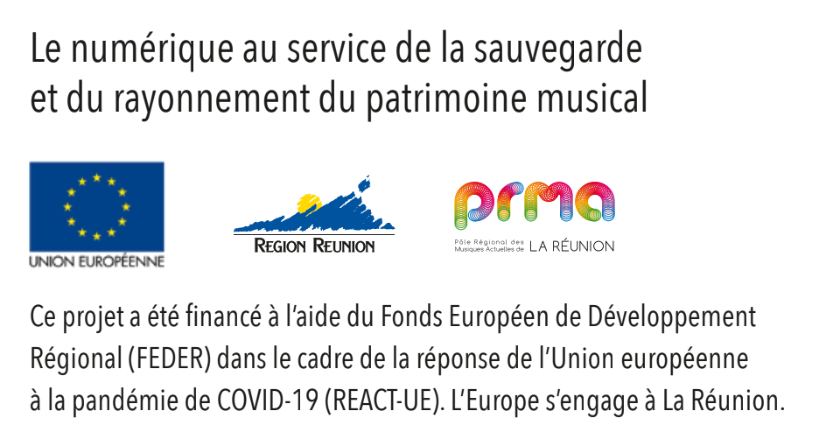Comoros music
The Twarab Âyn ensemble, performing engaged and engaging twarab
publié par
Yakina Djelane
19 juillet 2023
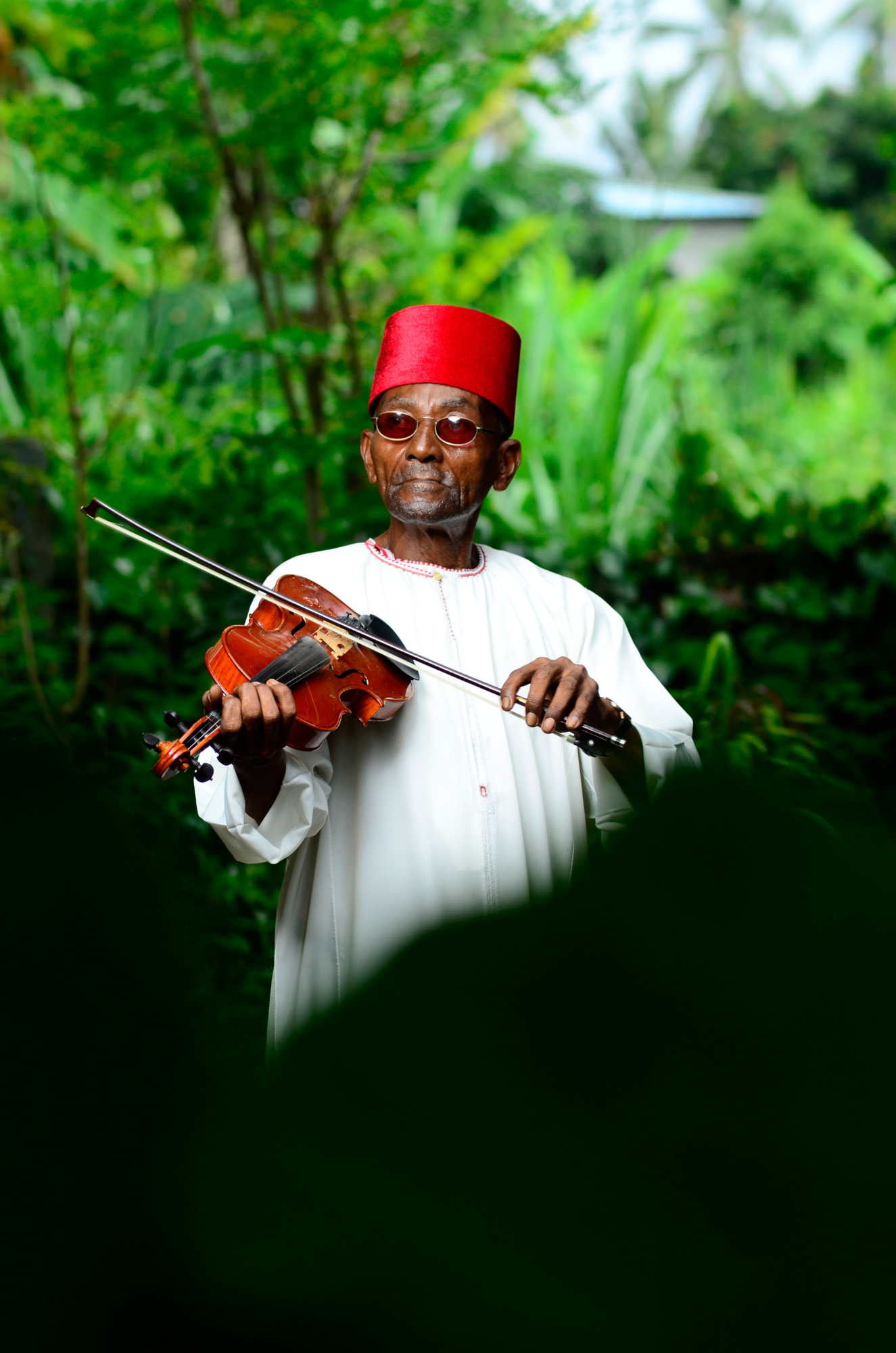
Twarab, derived from the Arabic word taariba, means "to be moved by joy or sorrow".
In the Comoros, the history of twarab is closely linked to Zanzibar, as the musical genre first appeared in the region under the Sultans Sayyid Barghash and Hamoud Bin Ali. The main twarab instruments were originally introduced when the latter brought an Egyptian ensemble to the archipelago in the early 1900s. Violins (fidrila), lutes (oud) and percussion instruments (msondro) arrived at the Sultanate of Zanzibar court, and Zanzibari musicians soon adopted them as their own. Eventually two musical associations were formed, Ikhwani Safaa and Culture Musical Club, both of which are still well known to this day.
Zanzibar at the beginning of the 20th century was an important hub for political and cultural exchanges. Many Comorian scholars were educated there, trade was frequent between both archipelagos, and marriages were contracted to cement political ties or strengthen friendships. During the 1910s, two Comorians of Zanzibari origin, Abdallah Cheikh Mohamed and Salim Bin Hilal, introduced the twarab to the Comoros. Initially this was only in the capital, Moroni, but then the genre also spread to other large towns such as Mitsamiouli. The first musical associations (shama) focusing on twarab were Marin Band, Kilabu, and Sipori. In its early days, twarabu or fidrila (referring to violins) took place at a future bride's house, and the musical associations were in charge of entertainment during the evening, performing songs that would praise the bride and groom as well as their families.
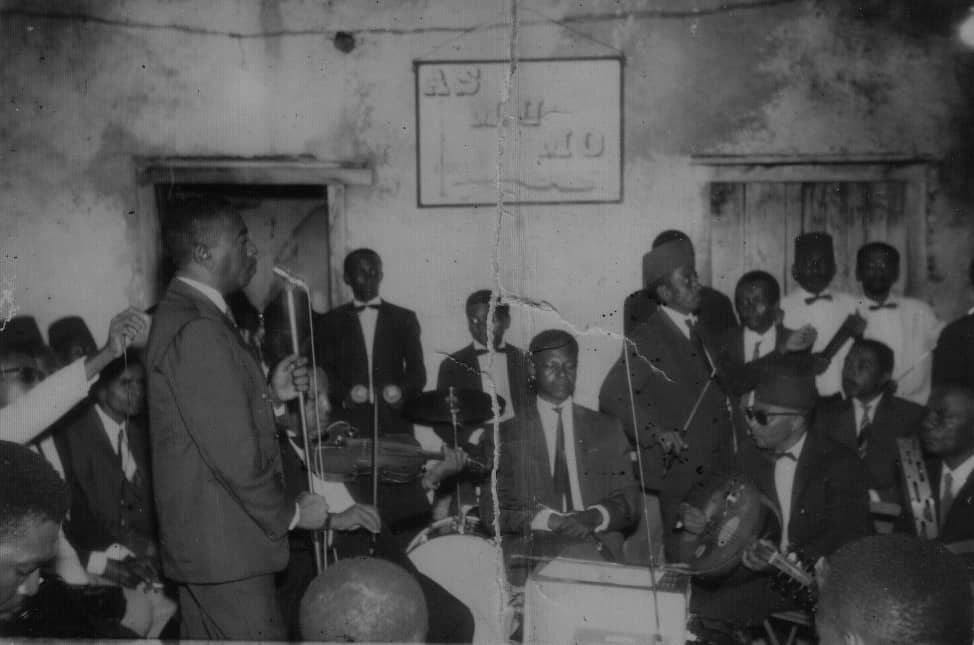
For Werner Graebner – author of a study on twarab in the Comoros – the 1940s and 1950s were the genre’s golden age. It flourished largely as a result of the musical associations. Celebrated songwriters such as Mbarouk, Maanbadi Mze, and Said Mohamed Taanshik led twarab performances for traditional ceremonies. They were succeeded by Said Mohamed Tourqui (in Moroni) and Mohamed Hassan (Ntsaweni) who were charismatic performers of love songs.
During the internal autonomy period of the 1960s, President Said Mohamed Cheikh encouraged creation of twarab in the Comorian language. His wishes were heeded, and far from being a pale imitation of Zanzibari rhythms, Mohamed Hassane and his peers drew on the traditional poetry form of wapvandzi to create texts in Comorian. Comorians often use Swahili repertoires because both languages have the same Bantu roots, making them easier to understand. Pioneering musical associations such as ASMUMO (Musical Association of Moroni), Awlad El Komor, and Saif El Watan performed Swahili songs in Comorian. In Anjouan, the first Saif el Watwan ensemble was formed around 1955, with Said Omar Foidjou as its main composer and performer. Songs such as Djamila and Sikitriko have not dated, and are still sung at weddings and other celebrations.
Starting in the 1980s, the twarab became more modern and other influences joined the original Eastern and Zanzibari influences. Violins, lutes, and accordions gradually disappeared, making way for modern instruments such as drums, synthesizers, and electric guitars Meanwhile women's music associations began to join this cultural and musical scene. In Anjouan, the Mahabouba El Watoine and Twamaya Ya Komor ensembles impressed with the richness of their repertoires featuring popular themes such as love, education, and married life. Under the title I love you Marie Mahmoud, founder and lead singer of the group Twamaya ya Komori, covered the song Yalaiti by Bi Kidude, underlining the ever-present Zanzibari influence.
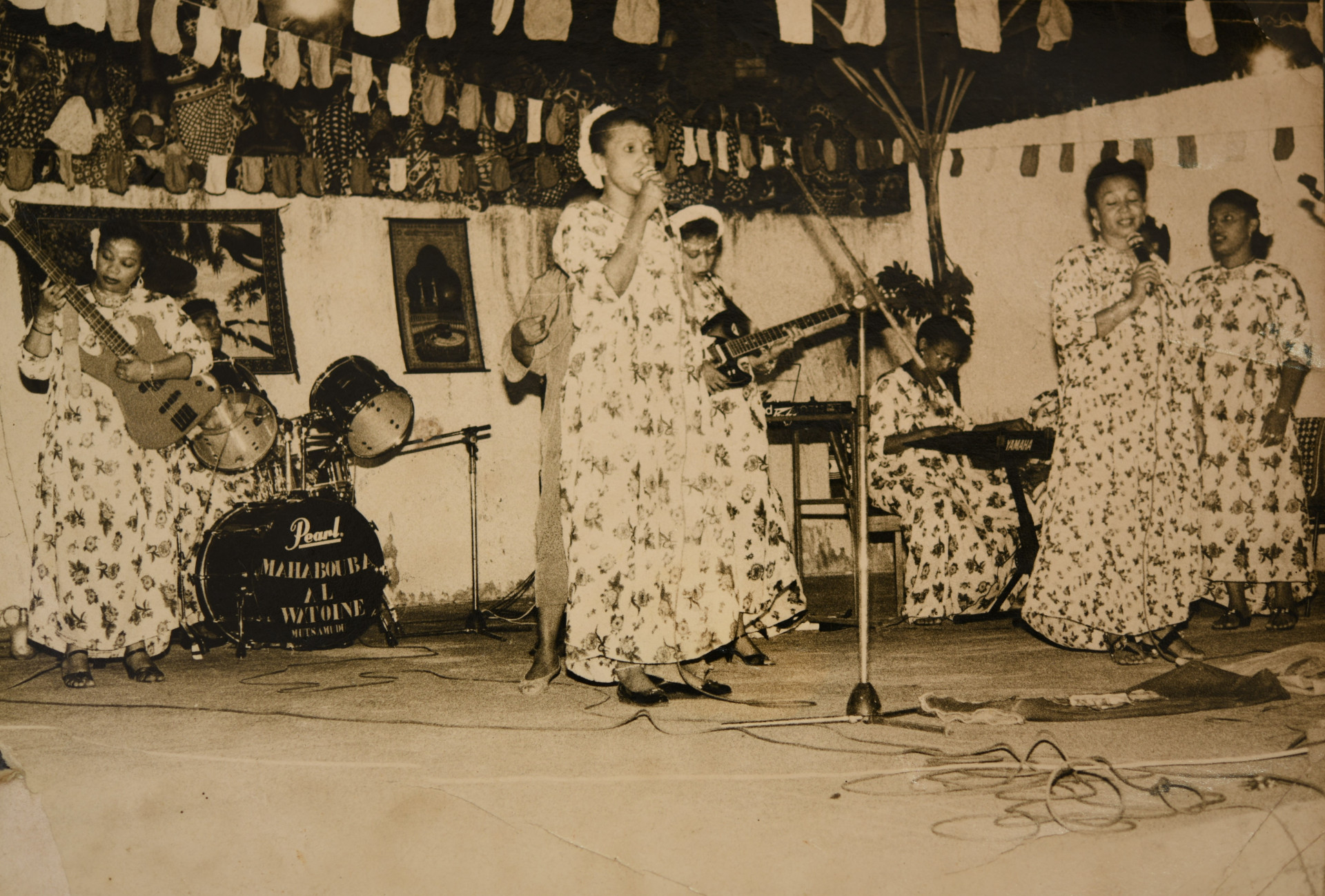
Twamaya ya Komori was created by women who sought to express themselves through the twarab genre, a genre that uses instruments often seen by society as being for men only. They were trained by Al Halidi, known as Mriga, to master the instruments and compose their own song melodies. These groups are now famous for, among other things, the women’s ability to skilfully play the guitar, drums, and/or accordion. However, some twarab groups became rather apathetic, contenting themselves to do covers and perform playbacks on stage. Twarab remained popular, with some interesting productions being created now and again, and songs that always had a range of themes, but the genre had lost its prestige. Mshago, with its fast and sometimes jarring rhythms, took over from Swahili and Arabic musical heritage. This is when a number of cultural stakeholders, nostalgic for a traditional, thriving twarab scene, raised the alarm.
The revitalisation movement
In February 2022, the Uwanga association touted the idea of a classical twarab ensemble inspired by Swahili and Egyptian traditions. Uwanga, which translates as "cultural renaissance", is an association supporting Comorian culture, and encourages the preservation and development of heritage. In June 2022, the ensemble originally had five members (Dahalani, Moussa, Faisoil Mlindassé, Mze Chabani and Abderemane Wadjih) who wanted to restore twarab to its former glory. Eight months later, the group had grown to include a total of fifteen singers and musicians. Three concert dates were scheduled in the capital, and it was in the gardens of the National Centre for Documentation and Scientific Research (CNDRS), on 10 December 2022, that the ensemble presented its first concert. The choice of location was symbolic, because the CNDRS is the national institution in charge of safeguarding and promoting the Comoros’ tangible and intangible heritage. The ensemble’s first public performance was a resounding success, and marked the birth of Twarab Âyn.
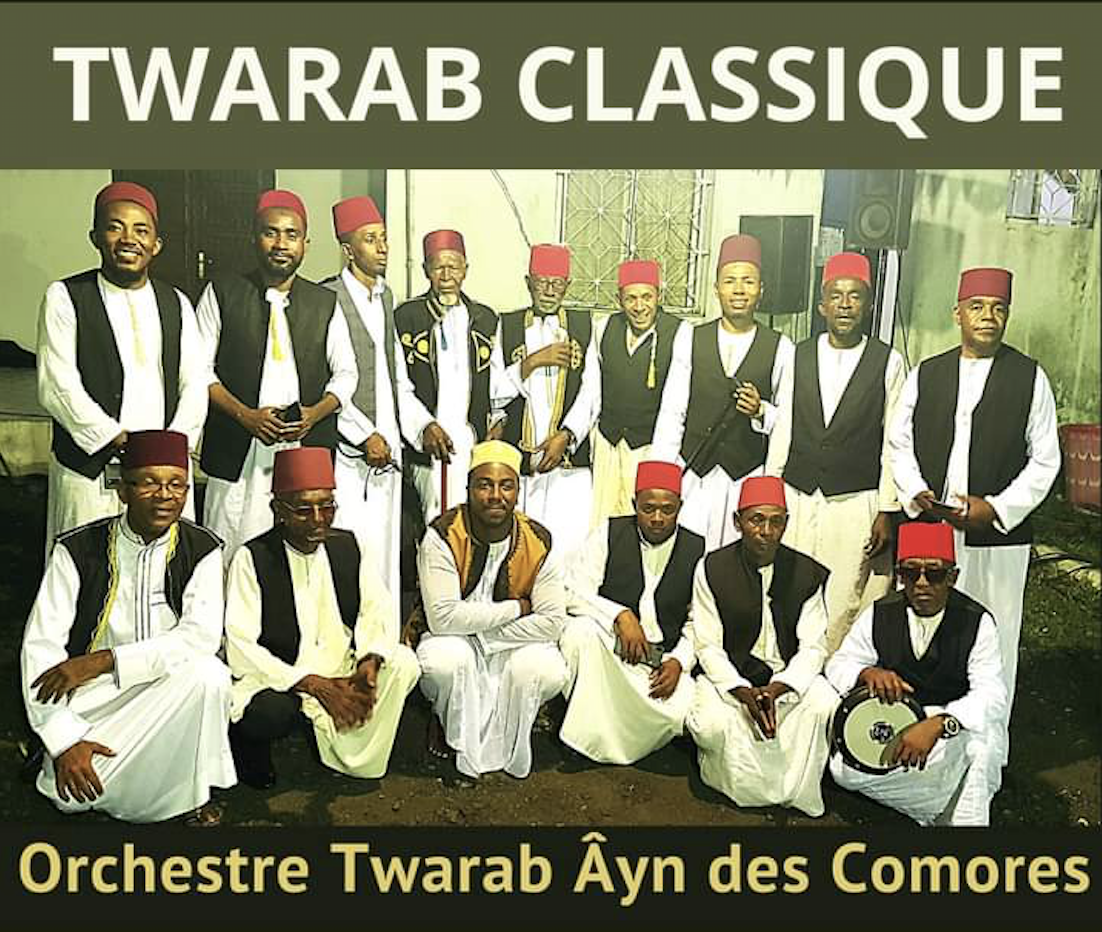
A few weeks later the public could see traditional twarab performed again, at the Franco-Comorian Alliance and the People's Palace. Each event was an opportunity for the fifteen singers and musicians to hone their performance and spotlight the goals of Twarab Âyn. When performing, the ensemble appears with the singers and musicians dressed in their best white boubous (kandu), black waistcoats (sukutri) and red chechias (kofia ya shada). Certain instruments – such as percussions and violins – had disappeared from twarab performances, and the public were delighted to rediscover a twarab that proudly displayed its origins (twarab ya aswwili). For Abderemane Wadjih, founding member and leader of the ensemble, this is just the beginning. This intergenerational musical project is an idea that he had had in mind for a long time. A trained anthropologist, he wants to share the essence of twarab. The ten pieces performed during the three concerts were carefully chosen, and reflect a long process of research and assimilation. The concerts were an original creation that unearthed well-loved texts, engaging the public with both well-known and lesser-known pieces.
Twarab Âyn's concert takes the audience on a fabulous journey to the origins of twarab (ya aswili). The interlude (bashrafi) often begins with Alf leila wa leila, originally sung by the Egyptian diva Umm Kulthum. The men proudly hold up their canes, and cheerfully perform dance steps. The women dance with their fans or play with their lesso (Comorian fichu). A performance shared with the public, but which also honours the older generations taking part in the artistic project. The group’s elders – Mze Chabani, Mze Number One and Maarouf – are considered custodians, living legends of a threatened genre. Mze Number One (real name Hamada Mdoihoma), is a well-known composer whose voice was previously only heard by most of the public on Radio Comoros. Finally putting a face on legendary Mr Number One is one of Twarab Âyn's revelations. His popular and patriotic song Lewo hapa, sung in Swahili and Comorian, dates from the 1960s. It has been used as a jingle on many radio programmes, and is often played on a loop in public places (bangwe) during the sambé dance.
Lewo hapa Today right here
Siku kicha mwezi wa lao the day ends and the moon shines
Ewa wungwana lewo machindano Good people, this is the day of the competitions
Naritsahe rizijuwe Let us find out
Ye zonesawo kweli za komori what the Comorian truths show
Za changiriwa no wazi trendeya the truths coordinated by the predecessors.
The ensemble carefully chooses pieces from the past that are representative of traditional and oral culture. At the end of each concert, the leader Abderemane Wadjih, sings Mdudu (“Moved”), a song composed by Mfoihaya Kari but made famous by twarab singer Mbarouk in the 1960s. The protagonist of this song about irony and slander (gungu) is Bau, who finds himself in trouble because of a village punishment.
Tsili Sha mdudu, I am moved
Mi bau tsili sha mdudu I, Bau, am moved
Ne mana nala sha mdudu And if I am moved
Ndapvo ntsoujuwa nambe ndopvi It's because I don't know who I can talk to any more
Mdude ntsudjuwa nambé ndopvi I am moved, I don't know who I can talk to any more
Some songs refer to specific political events. This is the case with Kulwabu, which celebrates the independence of the Comoros, obtained in 1975 without bloodshed. A great classic, it is performed by Abou Abdallah Fundi.
Hasalama ripvecheya ye amana It is with peace that we welcomed this gift
ko ya rungwa kulwabu. Not even a pin pricked us.
Twarab Âyn expresses a desire to revive musical heritage that has been forgotten or is in danger of disappearing. Concert intervals sometimes serve as a rallying point for the preservation of musical legacy, inviting audience members to join the Uwanga association in order to support ongoing cultural stewardship.
Twarab Âyn was born out of an urgent need to safeguard "true twarab" and make it known to new generations. The ensemble aims to spread the word about the genre, and its members have banded together to be ambassadors and advocates for twarab.
Farouk Djamily – a photographer, videographer, and manager of the group – is one of the ensemble’s main exponents, and has just finished making a documentary about the ensemble’s genesis. Twarab Renaissance is an 18-minute short film that presents the main musicians and underlines the importance of legacy. Life stories, the musicians’ experiences, and anecdotes are all presented with great sincerity and simplicity.
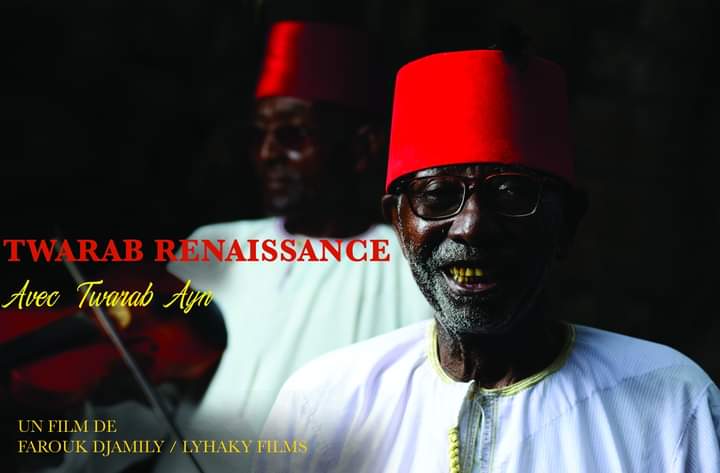
In addition to its considerable contribution in the search for an authentic repertoire, organology is a preoccupation for the ensemble. As there is no budget to buy instruments overseas, they are sometimes made on the islands using locally-sourced materials. For example, it is impossible to find a double bass in the archipelago so one had to be made with the help of a carpenter. This positive synergy between craftsmen, musicians, researchers, and cultural stakeholders has given a unique social and anthropological dimension to the art of twarab.
The Twarab Âyn ensemble will soon celebrate its first anniversary, and over the past ten months has already established itself as a model of cultural renaissance. This is not just a group who are performing covers of classic songs. They are engaged in creative work and reclaiming a musical genre specific to Comorian history. Although the ensemble regrets national authorities’ lack of interest, the team are leading a cultural resistance and intend to promote Twarab Âyn internationally. The twarab of Swahili and Egyptian origin is rising from its ashes, leaving audiences feeling moved and inspired. May the original voice of Comorian twarab be carried far beyond the archipelago's borders, and inspire people across the world.
Yakina Djelane
Traduction réalisée par Catharine Cellier-Smart (Smart Translate).
Illustrations 1, 4 et 5: Mapitcha Photo
Bibiography
DAMIR Ben Ali, Musique et société aux Comores, Paris, Komedit, coll. « biblioteki ya kikomori », 2004.
SAID AHMED Moussa, Guerriers, Princes et Poètes aux Comores dans la littérature orale, Paris, L’Harmattan, coll. « Archipel des Comores ». 2000
WERNER GRAEBNER, Twarab : a comorian music between two worlds. Kabaro, revue internationale des Sciences de l’Homme et des Sociétés, 2004, Diversités et spécificités des musiques traditionnelles de l’Océan Indien, II (2-3), pp.41-66.
